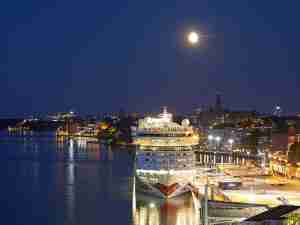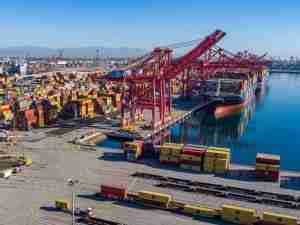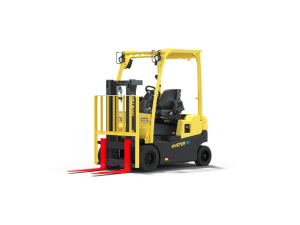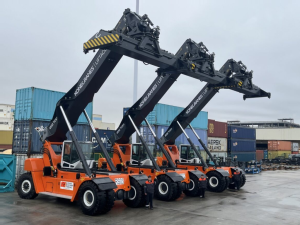Sen. Patty Murray, D-WA, Sen. Maria Cantwell, D-WA, and Rep. Brian Baird, D-WA, each spoke during the dedication ceremony, which commemorates not only the new marine terminal, but also the groundbreaking of a new unit-train rail facility on the terminal as well. Construction of the rail facility is expected to begin this fall, with completion scheduled for the late summer or fall of 2010.
“This is a big day for Southwest Washington,” Murray said. “As the Port of Vancouver expands, so do job opportunities across the area. From opening a new terminal to improving rail mobility, the Port of Vancouver is laying the groundwork for the region’s economic comeback.”

Terminal 5 was previously home to the Alcoa – and later Evergreen – Aluminum smelter and extrusion facility, that once hosted as many as 1,600 jobs for the Vancouver area. Evergreen Aluminum operated on part of the property into the early 2000s, but the property had not been fully utilized since Alcoa shut its plant down in 1985.
By developing a new marine terminal on the property, the port is breathing economic life back into the formerly vacant property.
“This is a tremendous day for Clark County,” said Mark Stiffler, director of asset management for Alcoa Aluminum. “We are delighted to have been a part of the process that has returned this location to a productive asset that will generate economic benefit and contribute to the long-term sustainability of the entire region.”
Environmental remediation on the property has been completed by Alcoa and Evergreen Aluminum, satisfying the requirements of cleanup to industrial standards, set by the Washington State Department of Ecology.
“Cleaning up and redeveloping Terminal 5 is a huge success,” said Jay Manning, director of the Washington State Department of Ecology. “Step one was protecting the river and people near the site from toxic waste. Step two was redevelopment to allow new economic use. The fact that Terminal 5 is now an important cargo handling site for wind turbines is an added bonus.”
Port crews are already handling wind energy cargo on Terminal 5, which gives the Port of Vancouver more room than most West Coast ports on which to handle wind energy cargo. The port also took delivery of its second Liebherr LHM500S mobile harbor crane in March. It is no coincidence that the port projects nearly 100,000 Longshore work hours on wind energy cargo alone in 2009. Vancouver’s port is the only one in North America to own two of these specific cranes – each of which has the capacity to lift the equivalent of two space shuttles (140 metric tons).
“As the United States moves to transition to using more clean energy technologies, the Port of Vancouver is going to play an instrumental role,” Cantwell said. “By bringing more facilities online, the port will be able to continue to contribute more to the economic vitality of the region.”
Murray, Cantwell and Baird have all been supportive of the production tax credit for renewable energy, which has spurred the growth in development of wind energy across the US, and the Port of Vancouver is one of the leading wind energy ports in the nation. Business across the port’s docks has picked up significantly since Congress extended the production tax credit in 2008.
“I was fortunate enough to attend the dedication of the first mobile harbor crane three years ago,” Baird said. “I’m thrilled to see that the port’s wind energy business has grown to such an extent that we are able to celebrate the addition of a second.”
“I’m proud to have helped the port become a leading clean-energy port and a consistent job creator,” Murray said.
The event also included, as speakers, Port Commission President Nancy Baker; Larry Paulson, the port’s executiv









